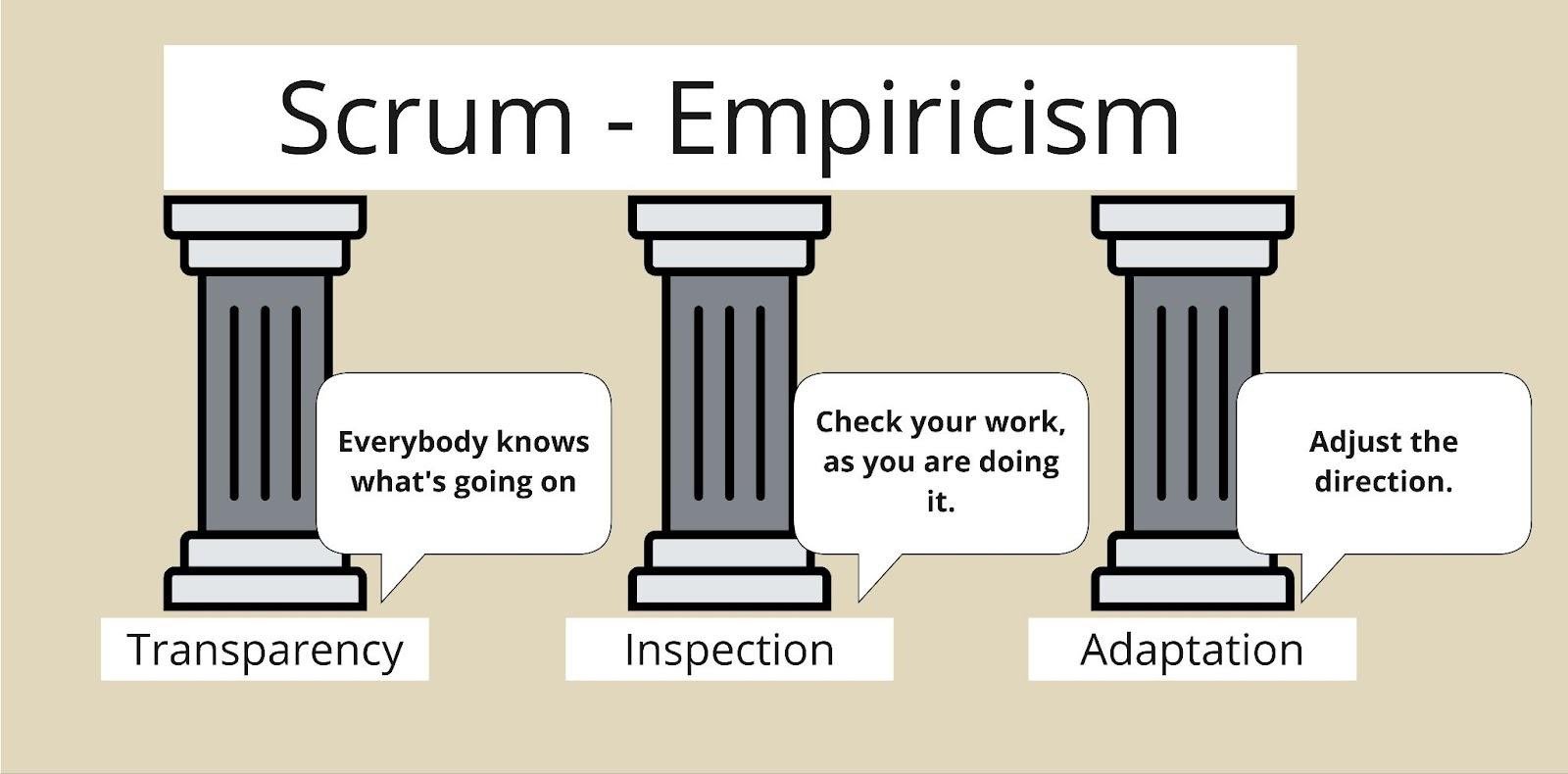Learn about purchasing for teams

Understand Scrum
Empiricism is weaved into scrum; we derive knowledge from our experiences while creating the product and make decisions based on our observations. This reduces failures due to false assumptions by creating a constant flow of hypotheses and related checks that test our hypotheses.
If you carefully scrutinize scrum, you will find again and again the three pillars of empirical process control: transparency, inspection, and adaptation.
Transparency
Scrum considers transparency of the three artifacts (product backlog, sprint backlog, and product increment) to be very important. The scrum team and everybody involved must have visibility into these artifacts because decisions are based on them. Beyond those artifacts, there is more: The scrum team needs to have transparency around its team agreements, the ways of collaboration within and beyond the team, as well as the company vision and strategy and how the product increment contributes to them.
For inspection to occur, transparency is paramount. Without transparency, inspection will be a waste of time and resources — even more time and resources will be spent in vain executing decisions based on an inspection without transparency.
Related Article: How to Facilitate Team Working Agreements
Inspection
In scrum, we inspect the progress toward the agreed product goal and the current sprint goal often and thoroughly. This creates early visibility into challenges in the product increment or the development process. The most concentrated moments of inspection happen during the five events of scrum: the sprint, sprint planning, daily scrum, sprint review, and sprint retrospective. Inspection can also occur anytime during development, as soon as there is reason to believe it might be necessary.
For any adaptation, inspection is paramount. Without inspection, adaptation will be a waste of time and resources. Your team may spend an entire sprint in vain executing decisions based on an adaptation without inspection.
Related Article: Sprint Goals Provide Purpose
Adaptation
As soon as inspection reveals the need to adapt the product increment or the development, process changes should be made. The scrum team decides the necessary actions and executes them. The surrounding organization must empower the scrum team to expedite the development and the evolution of the development process. It is an organizational anti-pattern to deny a scrum team its self-management.
Scrum Trainers Comment on Empiricism
Did you realize that, in the text above, there is no mention of projects? Working with scrum means developing a cutting-edge product to give your company a headstart on your competition. I sometimes see scrum used to run projects: A predefined scope is split into iterations, and there is no intention to change the scope during development. All decisions are made when the level of knowledge is at its lowest point, before development starts. You may end up wasting money and resources when new information is discovered during the development process.
I have also seen important learnings about the product, the customers, and the market during development deliberately ignored because this would have meant deviating from the plan.
Making good use of empiricism and scrum means leveraging learning immediately for the greater good of your customers, your company, and your position in the market.
Looking for more Scrum and agile resources to help you level-up? Subscribe.
======
About the Author

In 2003, Jürgen Hoffmann had his first contact with Scrum. Since then he has been part of processes implementing Scrum in different companies of various industries in all Scrum roles. He is an active Certified Scrum Trainer (CST) and Certified Enterprise Coach (CEC), as well as Certified Team Coach (CTC) working with all levels of management and staff on product development in coaching and training settings. He co-founded www.emendare.de and is very happy to work there.
Unlock new opportunities with Scrum Alliance certification
Scrum Alliance certifications help you develop the mindset and skills to lead teams, deliver value, and drive meaningful change. Join a global community committed to making work more effective and empowering for everyone.











